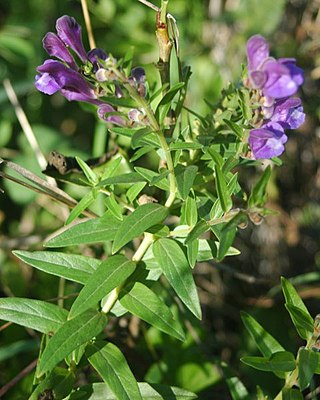Top Qs
Timeline
Chat
Perspective
Scutellaria baicalensis
Species of flowering plant From Wikipedia, the free encyclopedia
Remove ads
Scutellaria baicalensis, with the common name Baikal skullcap or Chinese skullcap, is a species of flowering plant in the family Lamiaceae.
Remove ads
Distribution
The plant is native to China, Korea, Mongolia, and Russia in the Russian Far East and Siberia.[1]
Traditional Chinese medicine
It is one of the 50 fundamental herbs used in traditional Chinese medicine, where it has the name huángqín (Chinese: 黄芩).[2] As a Chinese traditional medicine, huang qin usually refers to the dried root of S. baicalensis Georgi, S. viscidula Bge., S. amoena C.H. Wright, and S. ikoninkovii Ju.
Phytochemicals
Several phytochemicals have been isolated from the root; baicalein, baicalin, wogonin, norwogonin, oroxylin A[3] and β-sitosterol are the major ones.[4]
Names
As the term 'skullcap' is applied to over 200 plant varieties, the scientific name is used. Sometimes, Scutellaria lateriflora (North American skullcap) is mistaken for S. baicalensis.
Adverse effects
There have been several reports and small case series of acute liver injury with jaundice arising 1 to 3 months after starting herbal or dietary supplements containing S. baicalensis.[5]
Remove ads
See also
- Piper methysticum (kava), another anxiolytic GABAergic plant
- Valeriana officinalis (valerian), a sedative GABAergic plant
References
External links
Wikiwand - on
Seamless Wikipedia browsing. On steroids.
Remove ads

